 Politics & Law
Politics & Law

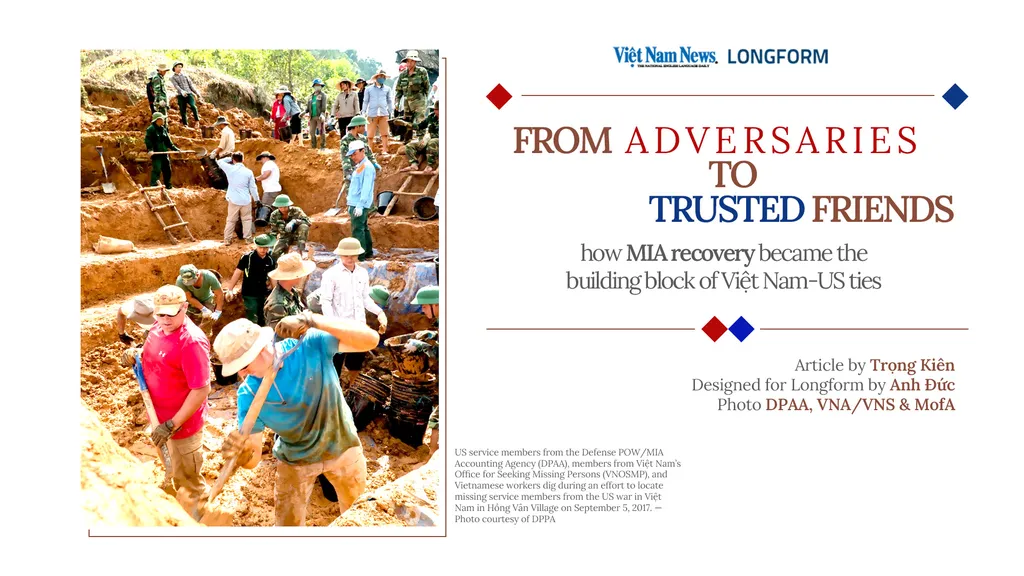 |
Trọng Kiên
HÀ NỘI — Four decades after the first joint recovery mission, the US and Việt Nam continue to race against time in their joint search for those missing from the war, a humanitarian mission that officials say has become a foundation of diplomatic relations between the two countries.
“We’re talking about former enemies that came together in a spirit of reconciliation,” Director of the US Defense POW/MIA Accounting Agency (DPAA) Kelly McKeague told Việt Nam News.
Describing the MIA work as a tremendous story, the official called this cooperation a building block for what today is a comprehensive strategic partnership between Việt Nam and the US.
The numbers are stark. DPAA has accounted for 737 Americans in Việt Nam since 1985 – a decade after the war in Việt Nam ended and a decade before normalisation of ties took place.
There are still 1,157 American MIAs remaining unaccounted for – including locations in Cambodian and Lao territories and crashes at sea – with over 800 estimated to be recoverable, while the remainder are classified as non-recoverable.
Vietnamese authorities, meanwhile, reckon that hundreds of thousands of their own soldiers remain unaccounted for. At present, across the country, over 300,000 sets of Vietnamese martyrs’ remains that have been gathered and interred in war cemeteries but whose identities have not yet been established, along with approximately 180,000 sets of remains that have yet to be located and recovered.
But the ongoing cooperation at every level of government and among civilians has become a model of bilateral healing.
In the last 10 years, through 642 joint investigations and 167 joint field recoveries – 195, if unilateral field excavations are included – "I look at that and I say thank you to the Vietnamese Government, because this cooperation, these successes, would not happen if it weren’t for us jointly working together,” McKeague said.
McKeague, himself the son of a veteran, speaks with solemn urgency. “I cannot fathom how any child can grow up without a father or a mother,” he said.
“Time doesn’t heal, they know everything about the loss – they know the day [their loved one] died, the circumstances, but not having human remains, not having them home, creates an uncertainty, and more importantly, the need for closure.”
He admitted his own bias in believing that Vietnamese people recognise the humanitarian value and the benefits of closure, and that this is a similarly important issue for the Americans, which is why they extended their offer to help the US locate and recover their missing.
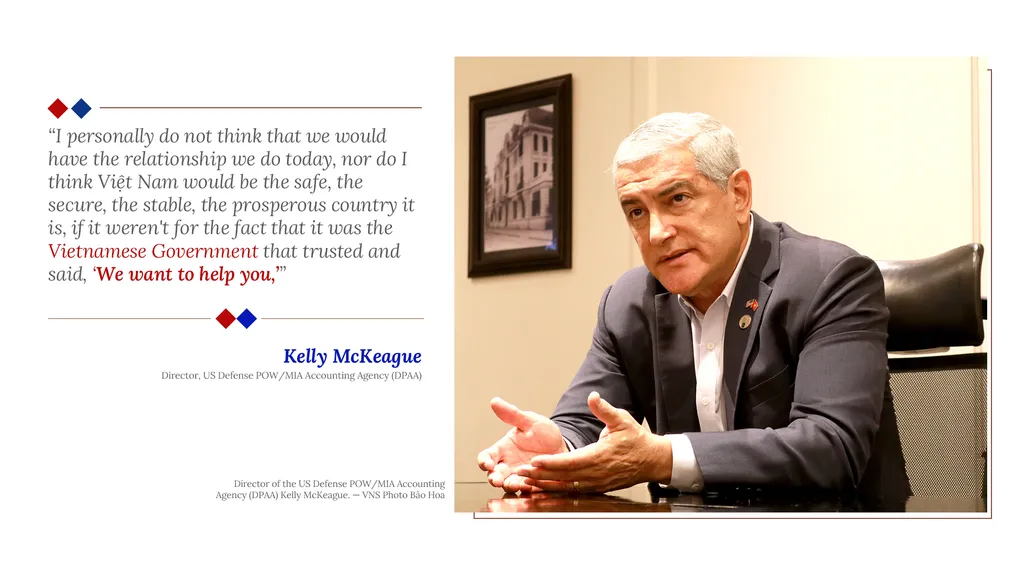 |
The work is painstaking, requiring extensive preparation both on paper and in the field.
Research begins with a thorough review of historical archives and records to identify areas that may contain the remains of missing personnel. Once a potentially viable site is identified, an investigation team – comprising members from the DPAA and Việt Nam’s Office for Seeking Missing Persons (VNOSMP), which includes officials from the Ministries of Foreign Affairs, National Defence, and Public Security – is deployed to locate potential witnesses. If a more precise location can be determined, an excavation team is then dispatched to the site.
The joint Việt Nam–US teams, along with up to 100 local labourers at each site – and often operating across several sites during a single excavation mission, then carefully comb through tropical soil, which is highly acidic and deteriorates bones. Adding to the challenge, rapid urban and industrial development in Việt Nam’s dynamic economy threatens to erase many old crash sites entirely – VNOSMP is tasked with monitoring these sites the teams would need to prioritise the sites where development are planned.
“Time is our biggest enemy,” the DPAA leader remarked.
“The remains are subject to environmental conditions... and we are dependent on first-hand witnesses – Vietnamese veterans, villagers – whose memories are fading.”
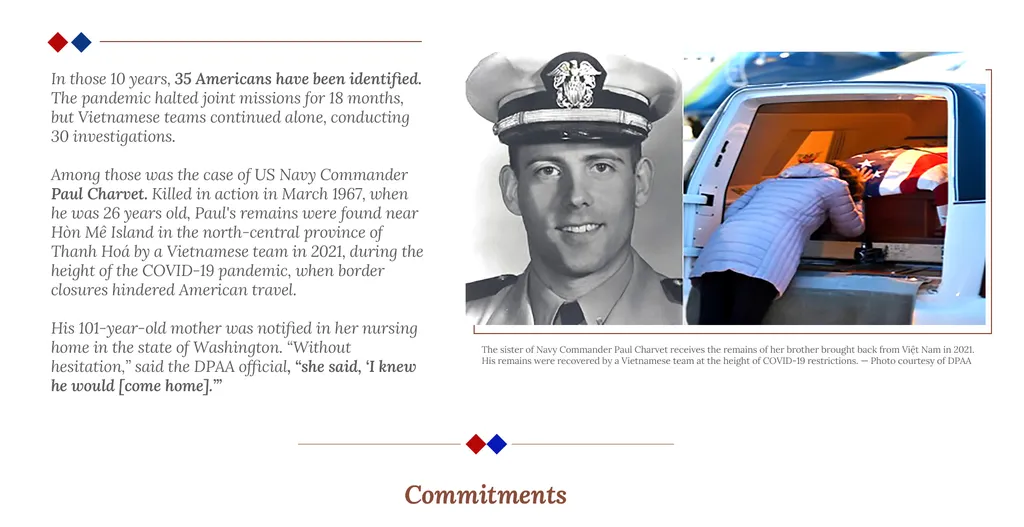 |
“The goodwill and outcomes of Việt Nam’s 50-year cooperation on MIA efforts have been highly recognised and appreciated by the US Government, Congress, veteran organisations and families of American MIAs,” the VNOSMP said, in a statement to Việt Nam News.
“They regard this as a model for bilateral relations in particular and international relations in general, as former President Joe Biden had twice affirmed in his speeches at the United Nations General Assembly in 2023 and 2024."
This cooperation has also served as a driving force for both sides to enhance collaboration in addressing other war legacy issues, such as dioxin remediation at Đà Nẵng and Biên Hòa airbases, support for persons with disabilities affected by Agent Orange, unexploded ordnance clearance, and the search, recovery and identification of remains of Vietnamese soldiers, the office noted.
“We cannot rewrite history. But with goodwill and effort, we have been, and continue to be, working together to build a brighter future for our two nations. The two countries’ joint efforts to build and strengthen cooperative relations while addressing the consequences of war represent the best way to heal the wounds inflicted on the land, on the body, and in the soul,” the statement reads.
"Việt Nam will continue to engage in comprehensive cooperation with the US on this meaningful humanitarian issue, in the spirit of the Joint Statement agreed upon by the two countries’ top leaders."
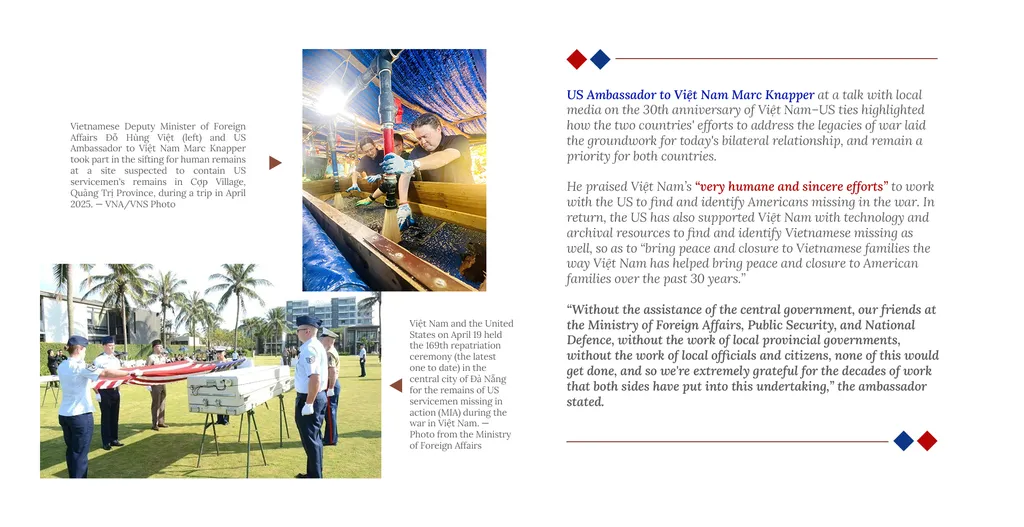 |
During the ambassador's working visit earlier this year to Cợp Village in the former Hướng Hoá District of the central province of Quảng Trị, which saw the bloodiest battles in the war, he observed the search for the remains of missing US soldiers.
Accompanying the US ambassador, Vietnamese Deputy Minister of Foreign Affairs Đỗ Hùng Việt reaffirmed Việt Nam's unwavering commitment to humanitarian cooperation.
Việt Nam has consistently honoured its commitments, not only through diplomatic efforts but also with a profound humanitarian spirit, according to the diplomat.
The fact that Việt Nam promptly began search operations for US soldiers missing in action following the signing of the Paris Peace Accords in 1973 reflects its goodwill and adherence to agreements with the US, he added. — VNS
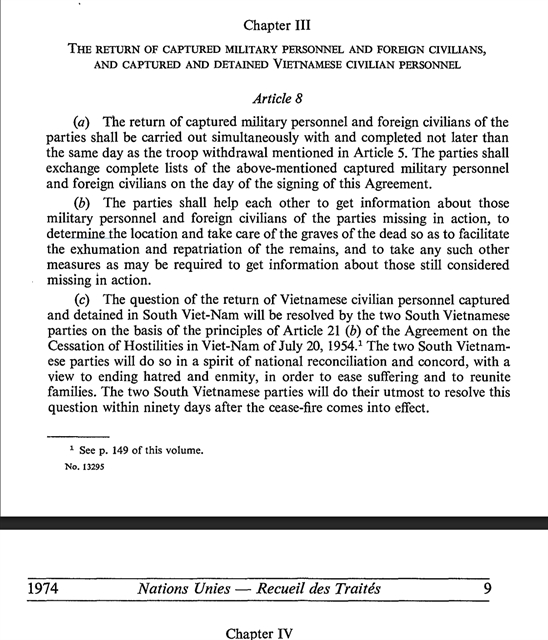 |
| The article on parties' commitment to support each other in finding MIAs in the war in Việt Nam, in the 'Agreement on Ending the War and Restoring Peace in Việt Nam', otherwise known the Paris Peace Accords. The deal was signed in 1973 by the Democratic Republic of Việt Nam, the Republic of Việt Nam, the Provisional Revolutionary Government and the United States. |




